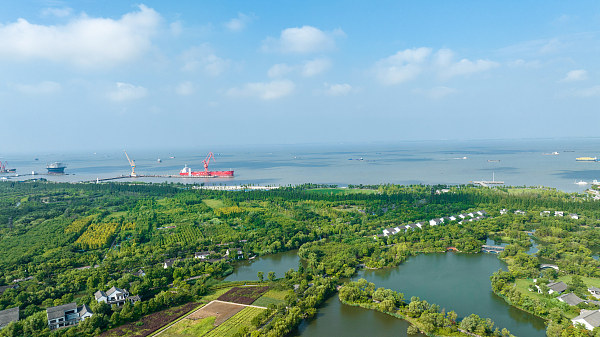Jiangsu expands forest coverage for a natural trail to carbon neutrality

(CFP Photo)
As March 12 marks National Tree Planting Day, a review reveals that Jiangsu Province has made solid progress in expanding forest coverage and enhancing carbon sink capacity.
In January, the province announced its implementation plan to peak carbon emissions and achieve carbon neutrality from 2021 to 2060. Jiangsu aims to increase its forest coverage rate to 24.1% by 2025, with steady improvement in the carbon sink capacity of forests and wetlands.
Jiangsu's forest coverage rate rose from 6.32% in 1982 to 24.09% in 2023, indicating less available space for afforestation. In recent years, the province has fully explored undeveloped areas such as saline-alkaline land, abandoned land, coastlines and rivers for afforestation.
In Dongtai City, saline-alkali soil on Xinchuan Farm has been used to cultivate honey locust, swamp cypress, chinaberry, Chinese tallow and Chinese elm, which have adapted to the environment, with some measuring over three meters in height. This site has a high salt content, about 0.3-2%, making it necessary to amend the soil by draining the salt and adding organic fertilizers, explained Sui Dezong, director of the Coastal Protective Forest Experiment Station of the Jiangsu Academy of Forestry.
Since 2019, Dongtai has cooperated with the academy to research the salt tolerance of trees, plant breeding and soil improvement, aiming to build a high-standard coastal protective forest on 1,000 mu (approximately 66.6 hectares) of saline-alkaline land.
The Hongze Lake Wetland National Nature Reserve in Sihong County, Suqian City, has become a reed paradise after the original fishing ponds and land reclamation activities were phased out. "The ecological restoration was conducted on a weakened wetland area last year, with the help of the Chinese Academy of Sciences to focus on wetland carbon sink capacity," said Zhang Ming, deputy director of the nature reserve.